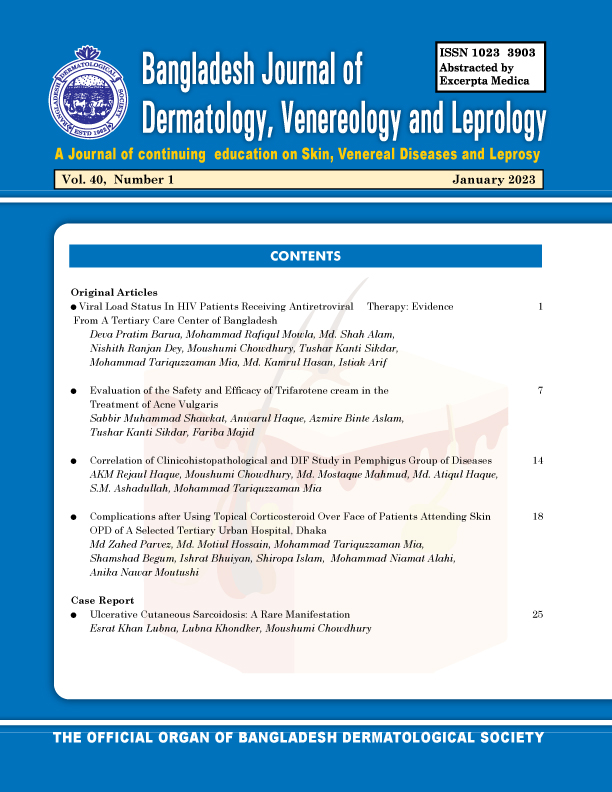Candidal Intertrigo is a superficial inflammatory dermatitis occurring on two closely opposed
skin surfaces as a result of moisture, friction, and lack of ventilation. It is seen as an oval
shaped area of macerated white skin on the web between and extending onto the sides of the
fingers. Candidal intertrigo is common in patients with diabetes and those who does wet
work. Candida and bacteria are often co-pathogens.
So, our study has designed to find out the organism which are associated with Candidal
intertrigo with secondary bacterial infection in patients with Diabetes mellitus (DM).
A Random, cross sectional study was carried out in the Department of Dermatology and
Venereology, BIRDEM General Hospital, Dhaka. The period of the study was six months.
(January 2018 to June 2018) and sixty Diabetic patients with Candidal intertrigo were
included).
Evaluation of the patients was based on detailed clinical history and physical examination.
Skin srcaping for fungus M/E, Culture and Sensitivity (C/S) was performed for the detection
of pathogens and HbA1C
for measurement of controlled and uncontrolled DM.
Among 60 patients, 20 (33%) patients were male and 40 (67%) patients were female. 47%
patients were of 51 years to 60 years age group. Obesity was found in 37 (61.7%) cases. Among
60 Diabetic patients with Candidal intertrigo 41 (63.3%) patients had secondary bacterial
infection. Among them 36 (88%) patients had uncontrolled DM and 5 (12%) patients had
controlled DM. Most (60%) of the patients had uncontrolled DM (HbA1C >7%) and suffered
from staphylococcus aureus as secondary bacterial infection. Most of those who suffered from
candidal intertrigo with secondary bacterial infection (54%) lived in rural area.
Prevalence of DM is increasing in developing country like Bangladesh. Relative immune
suppression occurs in diabetic patients which makes the patient more susceptible for Candida
intertrigo with super imposed bacterial infections. No such documented study has been done
in Bangladesh till date. Therefore it will be an intriguing study which will be helpful in
taking preventive measures in diabetic infection and can be used as reference in future
researches.
Candida intertrigo, Secondary Bacterial Infection, Diabetes Mellitus

